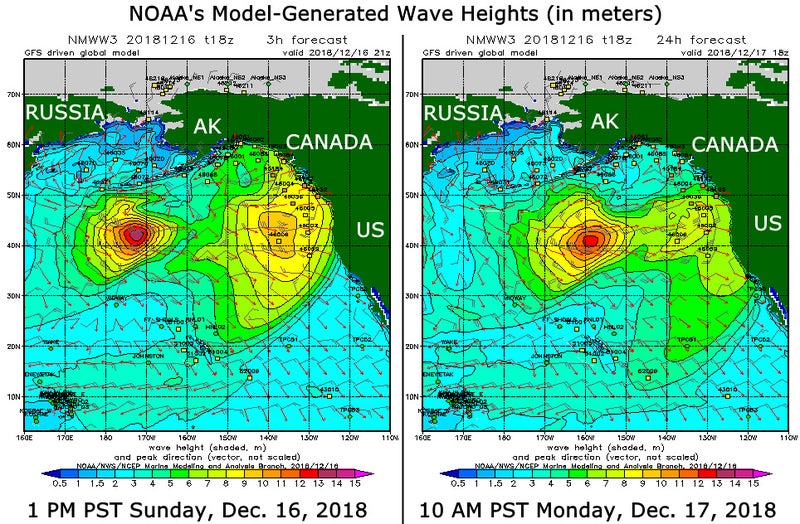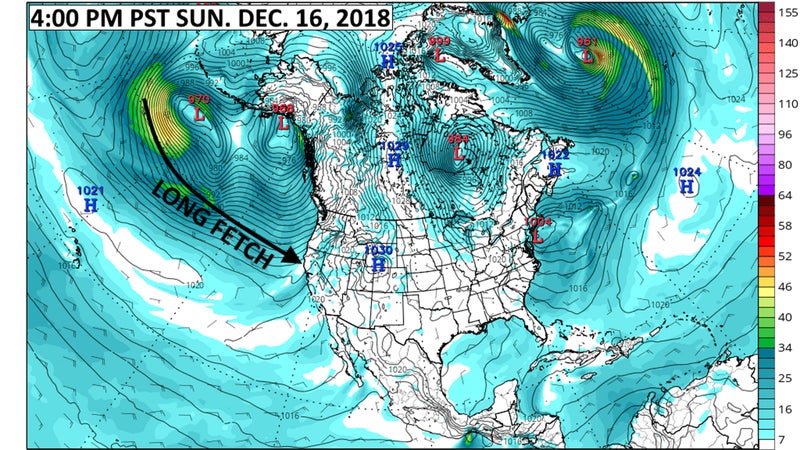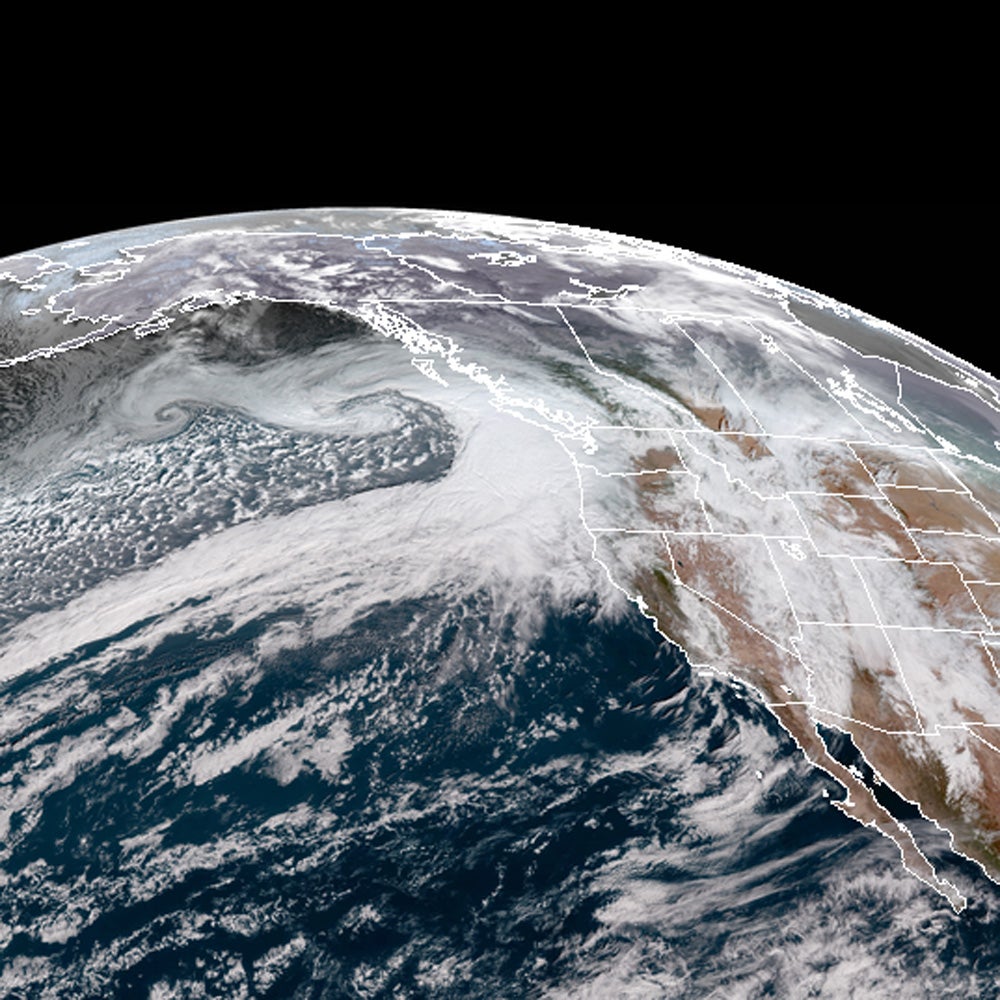The West Coast has phenomenal surfing, but the waves that crashed ashore Sunday and Monday were too wild for everyone except the best athletes.��In fact, the waves were so high that the National Weather Service warned people in central California to avoid the beach or “,” (never mind that that's impossible, but you get the idea).��
Local weather forecasts had called for dangerously high waves along the California and Oregon coasts to close out the weekend and they were right on the money. A 27-foot wave measured by a buoy off the shore near Monterey Bay was recorded there since the 1980s. A beach-goer captured a picture of a wave in Oregon.��
So why were the waves so nasty in California those two days? It’s all thanks to a low-pressure system thousands of miles away.
These epic waves are similar to what you'd see beneath an intense hurricane in warmer oceans. Really, the conditions that led to these huge waves aren't all that unusual for the eastern Pacific Ocean. What was unusual was that the waves got so big right along the coastline.��

First, a sprawling storm system in the Gulf of Alaska generated high winds that slammed into the West Coast. Pretty normal, and in most cases, you'd expect to see the highest waves near the strongest winds at the heart of the storm, way up north.��But that’s not what happened this time. Instead, the pattern over the eastern Pacific Ocean allowed for an insanely long “fetch” (a term for how far wind travels over open waters) from the Gulf of Alaska straight to the West Coast.

This fetch that developed over the eastern Pacific on Sunday and Monday was responsible for the intense waves. The above image shows winds near the ocean surface on Sunday evening, according to the . Winds roughly follow the isobars on the map, and you can see how they’re parallel almost the entire distance from the Gulf of Alaska to California and Oregon. That extremely long reach allowed those waves to build up over a considerable distance, leading to life-threatening conditions and .��
The storm that generated the mammoth waves has since weakened and moved closer to land, lowering the risk for massive waves along the West Coast. Another storm system approaching by the end of the week will kick up the waves again, but they'll be much smaller—and maybe even surfable for us mere mortals.��


